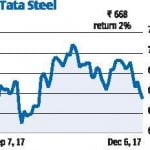
CAPE TOWN – Investing in emerging markets is a calculated risk. It can either go swimmingly well or horribly wrong. Here’s is what you need to know about investing in BRICS.
BRICS countries (Brazil, Russia, India, China and South Africa) account for 40% of the world’s population and an estimated 25% of its GDP.
Considering the valuable contribution these countries make to the world, they possess the potential to yield profitable return for investors.
For instance, Brazil has the largest economy in Latin America and is a large contributor of energy whereas India is a global leader in manufacturing.
Significantly, China, the largest BRICS member by population and GDP, has foreign reserves which was approaching R28 trillion in 2009.
READ: The 20th annual Raging Bull event is back!
“Brics gives us an opportunity to create jobs, and work in tangent with the partnership to re-skill and up-skill our workforce,” says Dr Iqbal Surve.
“We have to credit our government for realising the goal for SA to be a partner in this multinational forum. The state continues to amend policies and laws to create attractive conditions to draw investments. It was after intense lobbying with economic giants and wealth-creating nations, Brazil, Russia, India and China, that we joined the partnership seven years ago. We set ourselves on a course and to roll back centuries of economic drought”, added Surve.
READ: SA gets R20 billion BRICS boost for development projects
Risks of BRICS
Brics investments are risky because the nation’s markets are underdeveloped. This leads to issues with transparency and reporting in general. In addition to this, a general lack of liquidity creates an increase market volatility.
This is depicted by South Africa’s volatile economy. On September 13 year, the rand slipped to its weakest in three weeks.
The rand slid to R13.1683 to the dollar at 5pm, 14.71c softer than at the same time on Tuesday. Ratings agency, Moody’s then warned that the rand could fall further as political pressure mounted closer.
Similarly, the rand also took a dive when Finance Minister Malusi Gigaba presented his maiden budget statement on October 25. This was attributed to South Africa slashing its projected gross domestic product (GDP) by almost half. From 1.3% forecast in the February budget to 0.7%.
The decline in business and consumer confidence is what drove the rand to the ground.
Benefits of BRICS
There is the possibility that BRICS nations will outperform their first world counterparts in the next decade. However, it is not certain that all BRICS nations will do well. Based on this, any investment in BRICS should be allocated wisely. If one’s overall emerging market allocation runs between 5% and 8%, no more than half of this should ideally be devoted to that BRICs investment.
Bearing in mind that BRICS does not appear on the stock market, it is a long term investment.
Investors are spoiled with a variety of investment options in BRICS states. They can either invest in ETFs, mutual funds and closed-end investment funds. To invest in specific firms however, ADRs are considered the best investment.
[“Source-iol”]




